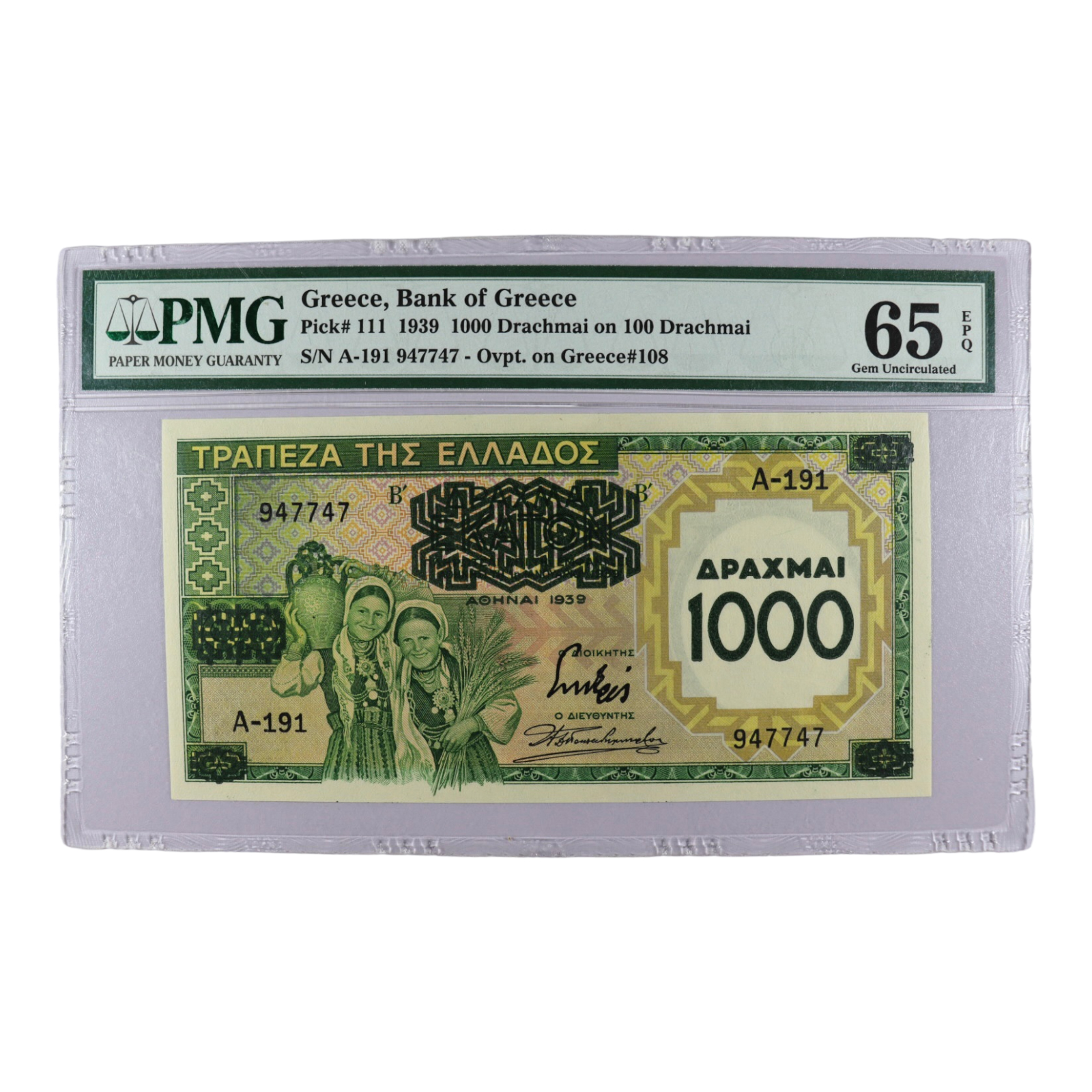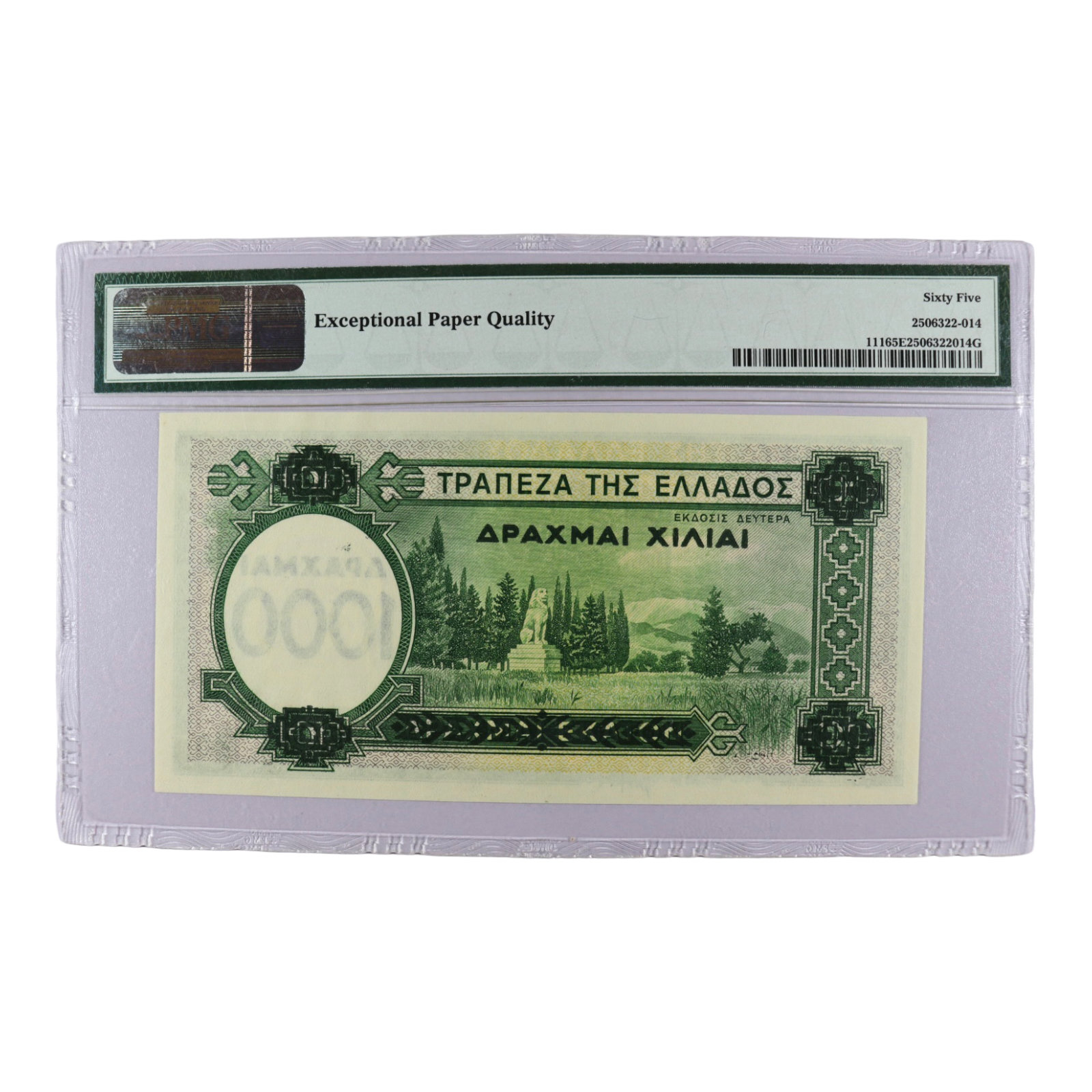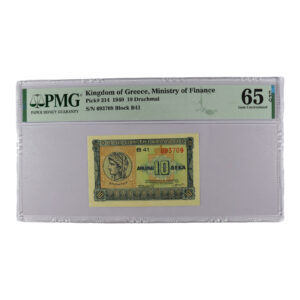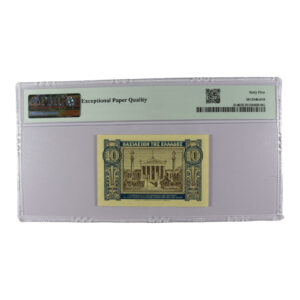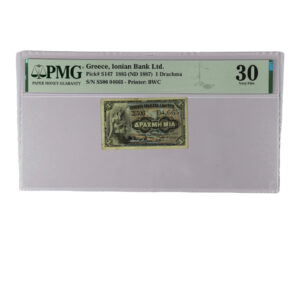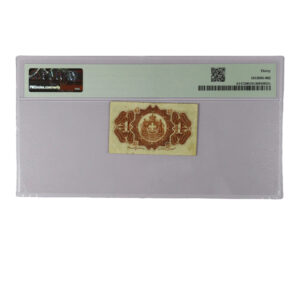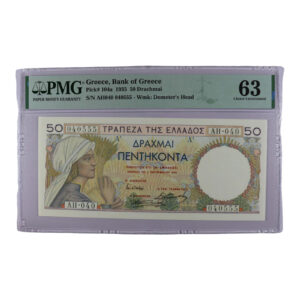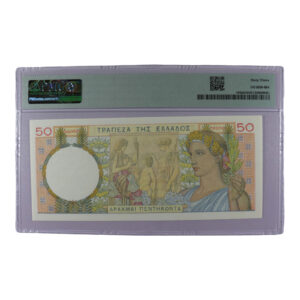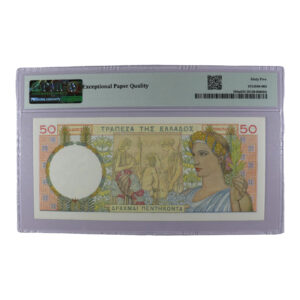Obverse:
Two young Greek women dressed in traditional attire, one is holding a water jug and the other one is holding a sheath of wheat.
Reverse:
Lion of Chaeronea, erected by the Thebans in memory of their dead after the battle of Chaeronea.
Watermark:
Archaic head of a man
Comments:
This note was overprinted on top of unissued 100 Drachmai notes in Athens in 1941. However, a ship carrying 5 million of these unissued notes was sunk off the coast of Monemvasia in 1941, and a large quantity of notes fell into the hands of locals. Many people forged the overprint on these notes to pass them off into circulation. One of the best ways to recognize if overprint has been forged is the serial number prefix, as these were the notes aboard the ship, and none of the notes from these prefixes entered circulation with official overprint
No genuine notes from outside these prefixes (aside from potential error notes) exist without overprint. Any notes with overprint from these prefixes are known to be counterfeit. However, counterfeiters realized that authorities knew which prefixes of notes had been on the ship, so to avoid being caught, some counterfeiters changed the serial number prefixes of notes with some success. Modern forgeries of overprint do exist, with prefixes not within the ranges above (one such example has the prefix Β-188, well within ranges of genuine notes). What is most likely for these is that the original overprint has been removed chemically, and new “counterfeit” overprint has been applied, to pass off an originally genuine note off to collectors as a counterfeit to earn a higher price.
Another method to differentiate genuine notes from forgeries is the style of overprint, as many forgeries are crude in nature compared to genuine notes. One of the biggest common differences is in the text “ΑΘΗΝΑΙ 1939” on the obverse, which can often look much thicker or less even compared to notes with official overprint. However, genuine overprint may vary in appearance due to the amount of ink used and how quickly it was applied, though usually to a much lesser degree.

